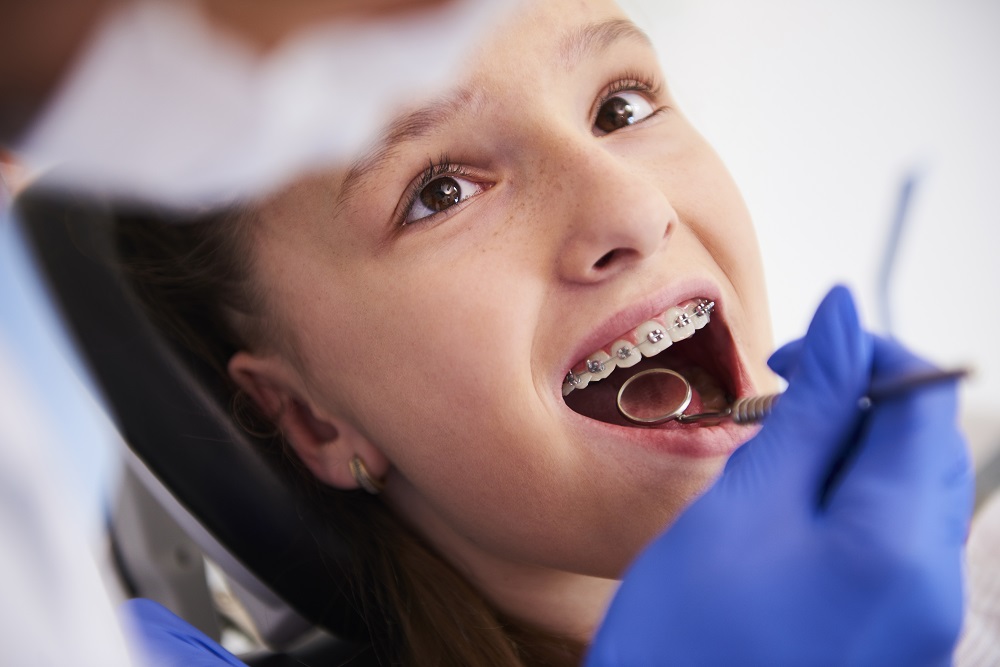After the journey of wearing braces, a radiant, perfectly aligned smile is a cherished achievement. However, the process doesn’t end when the braces come off. Retainers play a pivotal role in ensuring that your teeth stay in their newly corrected positions. In this article, we will explore the vital functions of retainers, their types, and why consistent wear is essential for long-term success.
Why Retainers Are Essential After Braces
Retainers are custom-made orthodontic devices designed to hold teeth in their corrected positions after braces have been removed. They are crafted to fit each patient’s unique bite and tooth arrangement. Retainers, recommended by your trusted dentist in Farmington Hills, prevent natural shifting that can occur as the teeth adjust to their new alignment and maintain the smile’s integrity.
Types of Retainers:
Hawley Retainers:
Hawley retainers are composed of a plastic base that rests against the roof of the mouth and a metal wire that encircles the teeth to keep them in place. They are easily removable and are often customizable with various colors and designs.
Clear Retainers (Essix Retainers):
Clear retainers are made of a transparent plastic material that fits snugly over the teeth. They are virtually invisible, providing a discreet option for post-braces maintenance. Their removable nature allows for easy cleaning and maintenance.
Fixed or Bonded Retainers:
Fixed retainers are permanent and are typically bonded to the back of the front teeth. They are not visible when smiling and provide continuous support in maintaining the corrected alignment.
The Functions of Retainers:
Preventing Relapse:
After braces in Farmington Hills are removed, there is a natural tendency for teeth to gradually shift back to their original positions. Retainers counteract this tendency by holding the teeth in their newly aligned state.
Aiding in Bite Alignment:
Retainers help in stabilizing the bite, ensuring that upper and lower teeth meet properly. This is crucial for proper chewing function and overall oral health.
Ensuring Comfortable Speech:
Properly aligned teeth contribute to clear and articulate speech. Retainers play a role in maintaining the corrected tooth positions, which can impact speech patterns positively.
Preserving Facial Aesthetics:
Retainers contribute to maintaining the improved facial aesthetics achieved through orthodontic treatment. They prevent any potential changes in the smile’s appearance due to shifting teeth.
The Importance of Consistent Retainer Wear:
Initial Full-Time Wear:
After braces are removed, orthodontists typically recommend full-time retainer wear, which means wearing them day and night. This ensures that the teeth settle into their new positions effectively.
Transition to Nighttime Wear:
As time progresses, the orthodontist may recommend transitioning to nighttime wear. This phase is critical for long-term success, as it continues to provide stability while allowing for more comfort during the day.
Regular Follow-Up Appointments:
Periodic check-ups with the orthodontist are essential to monitor the progress of the teeth and ensure the retainer is still effectively maintaining alignment.
Frequently Asked Questions:
Can I Clean My Retainer with Regular Toothpaste?
It’s not recommended to use regular toothpaste on retainers, as it can be too abrasive and may cause damage. Instead, use a non-abrasive cleaner specifically designed for retainers, or a mild soap.
What Should I Do If My Retainer Feels Uncomfortable or Doesn’t Fit Properly?
If your retainer feels uncomfortable or doesn’t fit properly, contact your orthodontist immediately. They may need to make adjustments or create a new retainer to ensure it fits correctly.
How Long Will I Need to Wear My Retainer?
The duration of retainer wear varies from person to person. Initially, it’s typically recommended to wear them full-time, and then transition to nighttime wear. Your orthodontist will provide specific guidance based on your individual case.
Can I Eat or Drink While Wearing My Retainer?
It’s generally best to remove your retainer before eating or drinking anything other than water. Eating with a retainer in can cause damage and may lead to hygiene issues.
What Should I Do If I Lose or Damage My Retainer?
If you lose or damage your retainer, contact your orthodontist as soon as possible. They will assess the situation and provide guidance on whether a replacement retainer is needed.
Conclusion:
Retainers are an indispensable part of the orthodontic journey, ensuring that the results achieved through braces endure over time. Understanding their significance and adhering to recommended wear schedules is crucial for preserving a beautiful, straight smile. By embracing the role of retainers, individuals can enjoy the long-term benefits of their orthodontic treatment, reveling in a confident and radiant smile for years to come. For personalized advice and exceptional care, consider consulting with the experts at Pearl Dental PC. You can reach out to their dedicated team at (248) 476-4416.





